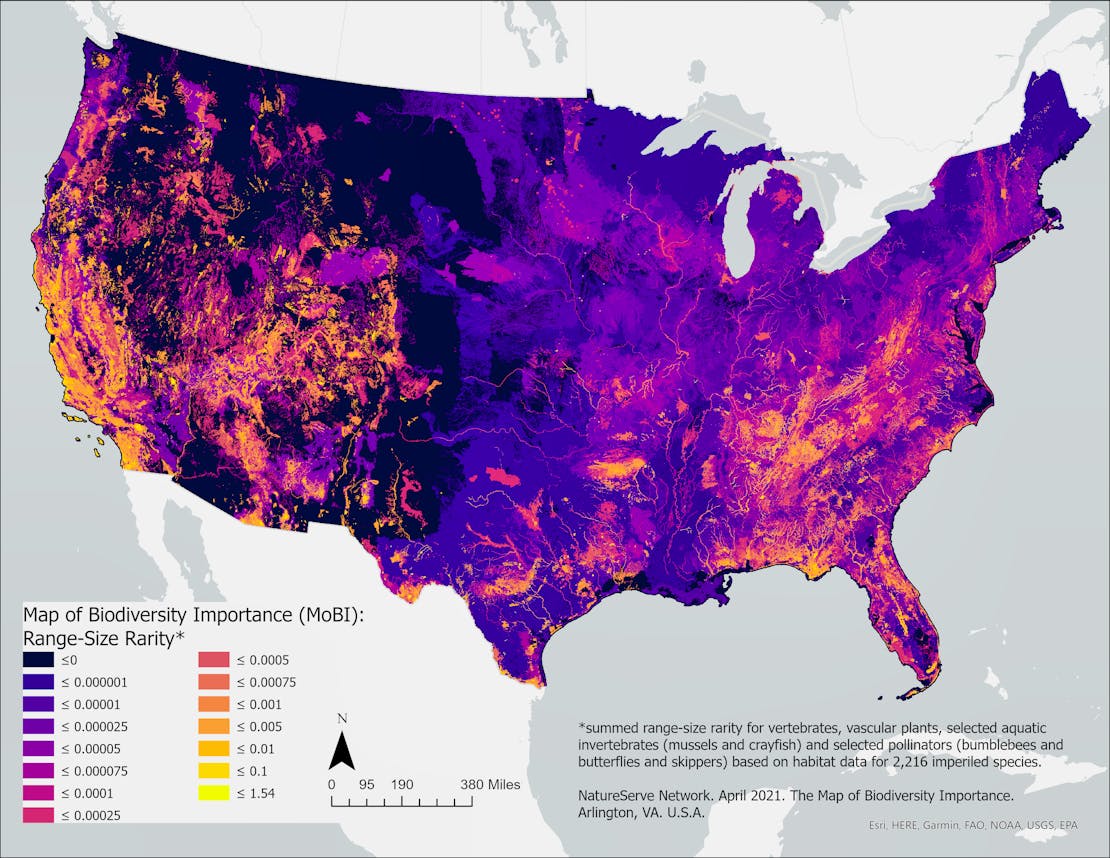Biodiversity hotspots are regions that contain a high level of species diversity, many endemic species (species not found anywhere else in the world) and a significant number of threatened or endangered species. The concept of biodiversity hotspots was first introduced in the late 1980s and since then, it has been used as a tool for identifying areas of high conservation priority.
The United States is home to several biodiversity hotspots that are crucial for the conservation of global biodiversity, including:
Southern Appalachians: The Southern Appalachian Mountains are one of the most biodiverse temperate regions on the continent. They’re known for their rich hardwood forests, which contain a greater diversity of tree species than in the whole of Europe. These forests are inhabited by a stunning array of plants and animals, many of which are found nowhere else in the world. The freshwater ecosystems within this region harbor significant numbers of freshwater fish and endangered mussels. These streams and forests are also home to the highest level of salamander diversity in the world including North America’s largest salamander, the Eastern Hellbender. The mountains are also an important migratory corridor for birds and provide essential habitats for imperiled bats. From green salamanders, Carolina Northern flying squirrels, spruce-fir moss spiders, Appalachian elktoe mussels, bog turtles, cerulean warblers and more, this region is a stronghold for biodiversity.
Sky Islands: These are series of mountain ranges in southeastern Arizona and southwestern New Mexico that are isolated from one another by large swathes of lowland deserts. Each mountain range is like an "island" of habitat, surrounded by a "sea" of desert. The Sky Islands contain more than 4,000 plant species, over 100 species of mammals and over 350 species of birds. There are at least 41 endangered species in the Sky Islands region, including the jaguar, ocelot and Mexican gray wolf. One of the major threats to the Sky Islands region is the construction of the U.S. border wall, which seriously disrupts the habitats and migrations of many animals in this region.
California: California is a global biodiversity hotspot. It not only has the highest numbers of species of any state in the U.S., but it has the most endemic species. Unfortunately, it also has the most imperiled biodiversity in the contiguous U.S.: more than 30% of California’s species are threatened with extinction, including the California condor and the San Joaquin kit fox. The California coastal ranges, Channel Islands, Mojave Desert and Sierra Nevada are four particular hotspots for biodiversity within the Golden State.
Florida: One particularly important biodiversity hotspot in Florida is the Everglades, a vast wetland ecosystem that stretches from central Florida to the southern tip of the state. It is home to an incredible diversity of plants and animals, including the Florida panther, American crocodile and the Florida manatee. The wetland ecosystem also supports a diverse range of birdlife, including the great egret, roseate spoonbill and the snail kite. Other areas of importance include the Florida Keys, the home to the endangered Key deer, and the Florida panhandle, which is inhabited by threatened species such as the gopher tortoise, red-cockaded woodpecker, grey bat, Eastern indigo snake, beach mice and the snowy plover. The waters off Florida are also extremely biodiverse, with coral reefs and species such as sea turtles and Rice’s whale—the most endangered mammal species in the U.S. with less than 50 animals left.
Your support ensures our expert team of scientists, lawyers, advocates and activists have the resources needed to demand action and protection for wildlife across the nation.
Donate Today!












Follow Defenders of Wildlife
facebook bluesky twitter instagram youtube tiktok threads linkedin